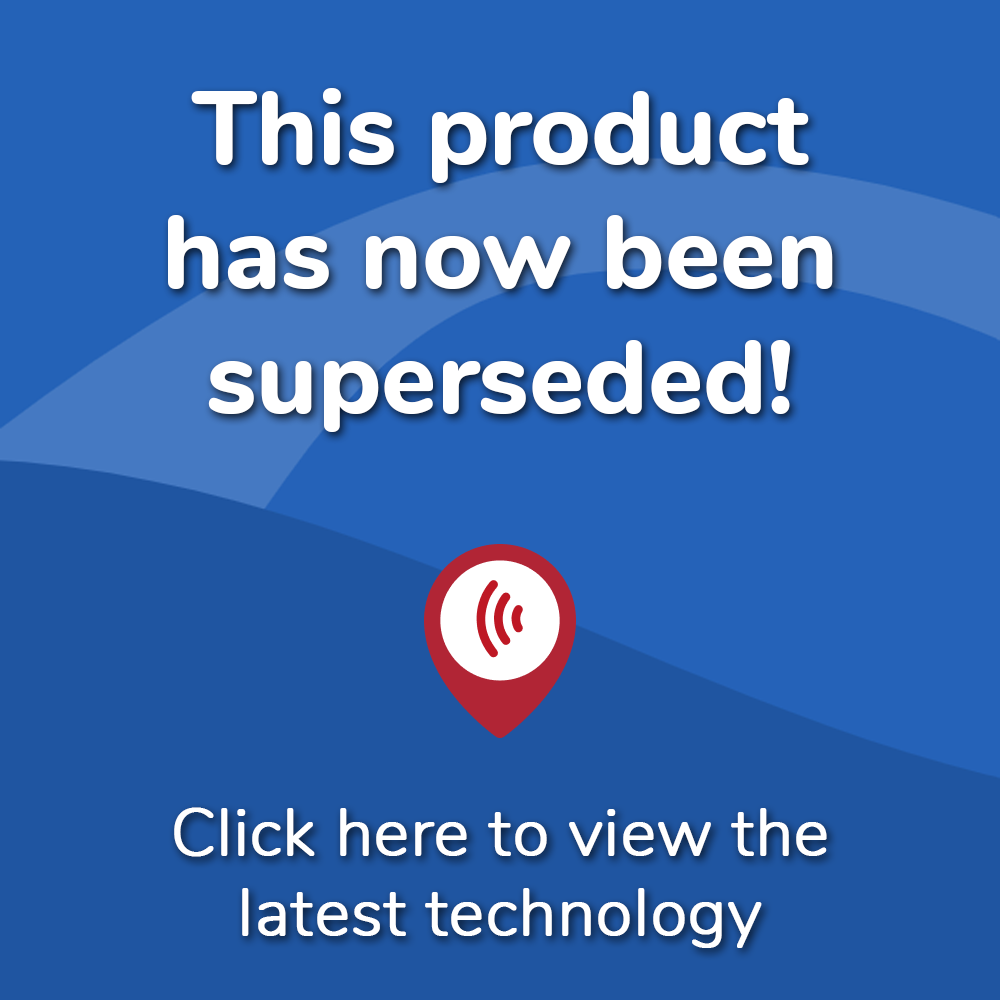WARNING DISCONTINUED Newer Unitron Models Available

What's included in our hearing aid prices?
Details & Features
The Z i90 is one of the more powerful hearing aids in the Starkey Z series. It is designed for those with an active lifestyle and those who need better hearing in noisy environments including at work, in meetings and restaurants as well as shopping centres, noisy social occasions and outdoor activities. With Starkey’s latest 900 sync technology you can be assured of wireless synchronisation and high quality, three dimensional sound in difficult listening environments.
The i90 is available in a wide range of styles, colours and fittings so that you can choose the right one to suit you and your level of hearing loss. These include the Behind The Ear styles (BTE), a BTE mini and BTE power plus. The most powerful style in the range these hearing aids are suitable for all levels of hearing loss from moderate to severe. Slightly smaller, the Receiver In Canal (RIC) includes a micro RIC with multiflex tinnitus option. These are suitable for mild to moderate hearing loss.
All the behind the ear styles are The behind the ear styles are small and discrete and are available in a range of 7 colours which include black, slate, sterling, bright white with sterling, expresso, bronze and champagne. These styles also have a telecoil.
The smaller, more discrete styles include In The Ear (ITE), which is suitable for mild to severe hearing loss and In The Canal (ITC), which is suitable for moderate to severe hearing loss. The smallest in the range is the Completely In Canal (CIC) style which is nearly invisible in the ear canal and is suitable for mild to moderately severe hearing loss. The telecoil is an optional extra in the ITE and ITC styles.
These smaller styles are custom made to the contours of your ear to ensure they fit comfortably and securely. They are available in 5 faceplate colours and 4 shell colours. All styles of hearing aid have a memory button and – with the exclusion of the CIC style, all have volume control and directional microphones.
The advanced technology i190 helps to clarify speech and sound in noisy environments. The 12 channels process and clarify the sounds around you to produce great sound quality.
Channels are used to process and clarify the sounds around you. The i90 has 12 channels which great sound quality.
The i90 is the second most powerful hearing aid in the Z Series. The Acoustic Scene Analyser and Audioscape program are set at level 3. These programs work together to assess your environment and detect background noise such as wind and machine noise as well as speech in noise. It can also separate the speech sound from the background noise to give you better hearing clarity.
The Spectral IQ ISO clear compression program can identify and enhance soft speech. It can also replicate high frequency, difficult to hear voices, such as those of women and children, and reproduce them at a lower, more audible frequency. It does this without distorting other sounds around you.
IQ Boost function allows user to reduce background noise without changing speech quality using the Surflink remote control. This is ideal for listening to conversation in demanding environments.
The Acuity Directionality program is designed to help the directional microphones focus on the sounds you want to hear whilst reducing background noise. The Speech ID program recognises speech sounds and the direction they are coming from. It works with the acuity directionality program to focus the microphones on speech, whether it is coming from the side, in front or behind you. The Voice IQ2 program enhances and preserves speech whilst managing background noise, this is ideal for busier, more difficult listening environments
The Binaural Spatial Mapping program is able to assess your listening environment and make subtle adjustments to the hearing aids to make listening more comfortable. It can reduce the impact of loud sounds without distortion, making listening more comfortable. The binaural telephone mode reduces the volume of your non-telephone hearing aid and turns up the volume on the other one, reducing distractions and making it easier to hear on the telephone.
The wireless spatial streaming capability ensures that the volume and memory programs are always on the same settings to make any changes seamless, no matter how difficult your listening environment is. The Purewave feedback eliminator filters out the whistle or buzzing sound of feedback before you know it is there, without distorting other sounds. The Multiflex Tinnitus program is designed to reduce the effects of tinnitus and can be programmed to your specific needs. Other features of the i90 include live speech mapping and advanced memory programs, so you can always have your favourite settings when you are listening to music or the TV.
The tough Hydrashield2 nano coating works to repel ear wax and moisture from your hearing aid, making sure it stays in the best working condition for longer.
Paul Harrison is an audiology expert at Hearing Aid UK, with over 20 years of audiology experience and a member of the British Society of Hearing Aid Audiologists Council (BSHAA) between 2015 - 2020.
Looking for a Newer Starkey Hearing Aid Model?
Latest Ranges AvailableOur specialist service includes:
Do not spend hundreds of pounds without getting a second opinion from us.
Please call us on 0800 567 7621
 Not only are the prices great, but the service is fantastic! Many thanks to your team.
Not only are the prices great, but the service is fantastic! Many thanks to your team.What's included in our hearing aid prices?
If you are looking at this page then it is likely that an audiologist has suggested that you purchase this particular hearing aid, so is this the best model for you?
In general, any audiologist will always recommend to you the model that best suits your needs. Here is a useful checklist to make sure that is the case.
- Audiologist level of knowledge: The audiologist you have seen will hopefully have a wide knowledge of all available hearing aids, however, some will only be familiar with a small number of brands and therefore may not really be in a position to know which model is the best for you. It is OK to challenge their recommendation and ask them to justify why this particular brand is the one for you.
- Do research: Read about the hearing aid that was recommended. Does it seem like it will suit your lifestyle? Does it have more or fewer features than you need?
- Be aware of sales targets: Many high street retailers have specific tie-ins to a particular manufacturer/brand. The hearing aid they have suggested may still be the correct one for you, but do your research so that you know why they might have recommended it.
If in doubt, feel free to give us a call. That's what we're here for. In the meantime, read all about our review of the best hearing aids for 2025 here
If you have significant hearing loss in both ears, you should be wearing two hearing aids. Here are the audiological reasons why:
Localisation: The brain decodes information from both ears and compares and contrasts them. By analysing the minuscule time delays as well as the difference in the loudness of each sound reaching the ears, the person is able to accurately locate a sound source. Simply put, if you have better hearing on one side than the other, you can't accurately tell what direction sounds are coming from.
Less amplification is required: A phenomenon known as “binaural summation” means that the hearing aids can be set at a lower and more natural volume setting than if you wore only one hearing aid.
Head shadow effect: High frequencies, the part of your hearing that gives clarity and meaning to speech sounds, cannot bend around your head. Only low frequencies can. Therefore if someone is talking on your unaided side you are likely to hear that they are speaking, but be unable to tell what they have said.
Noise reduction: The brain has its own built-in noise reduction which is only really effective when it is receiving information from both ears. If only one ear is aided, even with the best hearing aid in the world, it will be difficult for you to hear in background noise as your brain is trying to retain all of the sounds (including background noise) rather than filtering it out.
Sound quality: We are designed to hear in stereo. Only hearing from one side sounds a lot less natural to us.
Fancy some further reading on this topic? You can read about why two hearing aids are better than one in our article, hearing aids for both ears, here
For most people, the main benefit of a rechargeable hearing aid is simple convenience. We are used to plugging in our phones and other devices overnight for them to charge up. Here are some other pros and cons:
For anybody with poor dexterity or issues with their fingers, having a rechargeable aid makes a huge difference as normal hearing aid batteries are quite small and some people find them fiddly to change.
One downside is that if you forget to charge your hearing aid, then it is a problem that can't be instantly fixed. For most a 30-minute charge will get you at least two or three hours of hearing, but if you are the type of person who is likely to forget to plug them in regularly then you're probably better off with standard batteries.
Rechargeable aids are also a little bit bigger and are only available in Behind the Ear models.
Finally, just like with a mobile phone, the amount of charge you get on day one is not going to be the same as you get a few years down the line. Be sure to ask what the policy is with the manufacturer warranty when it comes to replacing the battery.
Looking for more information on rechargeable hearing aids? Read our dedicated page on the topic here
For most people, the answer is yes. But it's never that simple.
The majority of hearing problems affect the high frequencies a lot more than the low ones. Therefore open fitting hearing aids sound a lot more natural and ones that block your ears up can make your own voice sound like you are talking with your head in a bucket. Therefore in-ear aids tend to be less natural.
However the true answer is we can't tell until we have had a look in your ears to assess the size of your ear canal, and until we have tested your hearing to see which frequencies are being affected.
People with wider ear canals tend to have more flexibility, also there are open fitting modular CIC hearing aids now that do not block your ears.
There is also the age old rule to consider, that a hearing aid will not help you if it's sat in the drawer gathering dust. If the only hearing aid you would be happy wearing is one that people can't see, then that's what you should get.
Most people can adapt to any type of hearing aid, as long as they know what to expect. Have an honest conversation with your audiologist as to what your needs are.
Generally speaking, six or more. Unless it's none at all.
The number of channels a hearing aid has is often a simplistic way an audiologist will use to explain why one hearing aid is better than another, but channels are complex and it is really not that straightforward. Here are some reasons why:
Hearing aids amplify sounds of different frequencies by different amounts. Most people have lost more high frequencies than low and therefore need more amplification in the high frequencies. The range of sounds you hear are split into frequency bands or channels and the hearing aids are set to provide the right amount of hearing at each frequency level.
Less than six channels and this cannot be done with much accuracy, so six is the magic number. However, a six channel aid is typically very basic with few other features and is suitable only for hearing a single speaker in a quiet room. The number of channels is not what you should be looking at, it's more the rest of the technology that comes with them.
As a final note, different manufacturers have different approaches. One method is not necessarily better than any other. For example, some manufacturers have as many as 64 channels in their top aids. Most tend to have between 17 and 20. One manufacturer has no channels at all.
Hearing aids are easily lost, misplaced or damaged and typically are one of the most expensive personal possessions an individual can own. We offer hearing aid warranty coverage for £80 per year per aid. Find out more about this service we provide here
All our audiologists use the very latest technology and provide the full range of tests to accurately measure your hearing for free. Find out about what hearing healthcare services we offer all our customers here
Hearing Aid UK offers all their customers free home visiting services, even in a care home environment, for no extra cost. Including hearing tests, fittings, maintenance, check-ups and much more in the comfort of your own home and at your convenience. Find out more information about our home visits here
Here, at Hearing Aid UK, we are dedicated to offering low hearing aid prices. We achieve this by having no head office and low marketing costs. Our hearing aid prices are amongst the lowest you will find anywhere in the world. Explore our prices, brands, and models here
Ask the Experts
6 Morton Lane
Walkwood
Redditch
Worcestershire
B97 5QA
Latest Launch
When we refer to a product as 'Latest Launch', we mean it is the latest to be released on the market.
New
When we refer to a product as 'New', we mean that the product is the newest hearing aid model on the market.
When we refer to a product as 'Superseded', we mean that there is a newer range available which replaces and improves on this product.
Older Model
When we refer to a product as an 'Older Model', we mean that it is has been superseded by at least two more recent hearing aid ranges.



